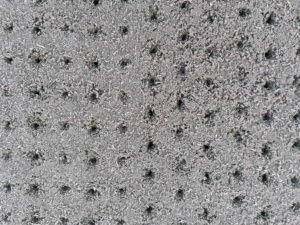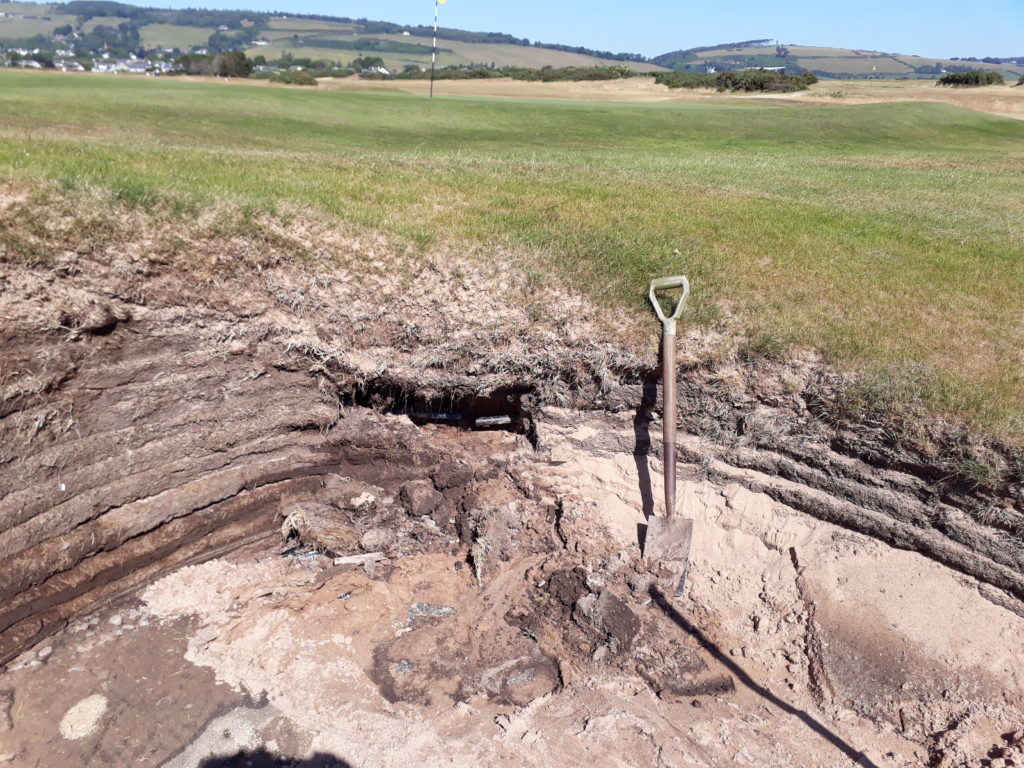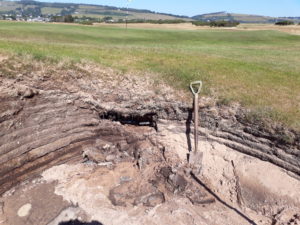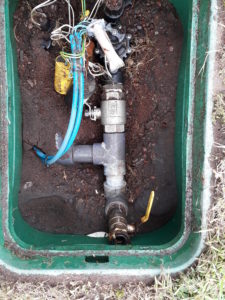7th July 2020
That’s us back into our first week of competitions and typically the weather has turned a bit sour of late, as it usually does after an early summer. Rainfall recorded in may was 21mm followed by 102mm in June, which was very welcome for the course in general after the very dry and warm April.
The greens are coming on now and seem to be performing better after all the heavy rain. We also top dressed on six occasions through early spring/summer in order to help fill in the Leatherjacket damage and are pretty much hole free at the minute. The Meadow grass seed heads are abating and our cutting height has remained a little higher at 4mm which in turn reduces any unnecessary stress. 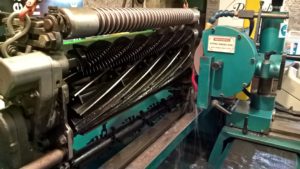
Our cutting units are razor sharp after a re grind recently and this improves ball roll through the grass leaf not getting torn when cut. Also a clean cut is healthier for the grass as less infection and disease take hold.
Fairy rings
Some fairy ring activity (basidiomycetes fungi) has flared up on certain greens particularly the 4th and 7th for some reason. I can’t explain why some greens get this and not others as all the greens are treated in the same way. Historically I remember treating rings on the 7th green back in the early 90s’ as it was the worst green back then too! There used to be a chemical, long withdrawn (oxycarboxin) and like everything else that was effective they took it away?? but this got rid of them pretty quickly. These rings always look worse when the turf is lean because there is no colour to disguise them but they are superficial and don’t really hinder the ball roll. We have one more Revolution wetting agent to go on shortly which will help condition the soil and I may have to fire up the old compost tea maker soon to add some beneficial microbes and fight the fairy ring fungi.
Roughs
During lockdown we were a little limited in how much rough we could cut and concentrated on keeping the semis in check. We managed to get an intermediate cut done and have kept on top of this recently. The tall natural roughs are quite long and got no early golfer trampling with the closure and are certainly a challenge now if you go in them. We’ll need some dry weather again to cut and collect a bit more of the tall roughs here and there.
George Paterson


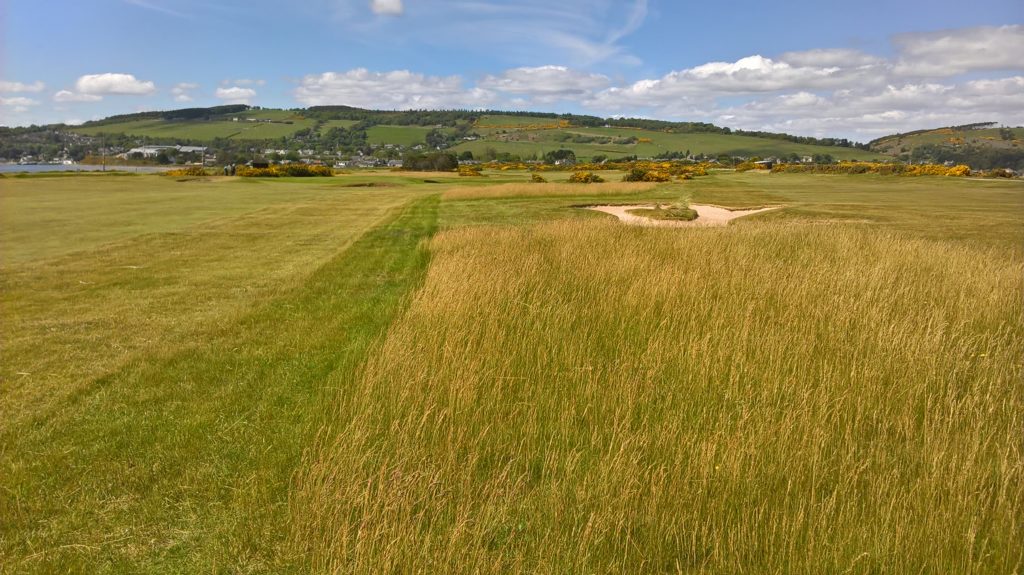
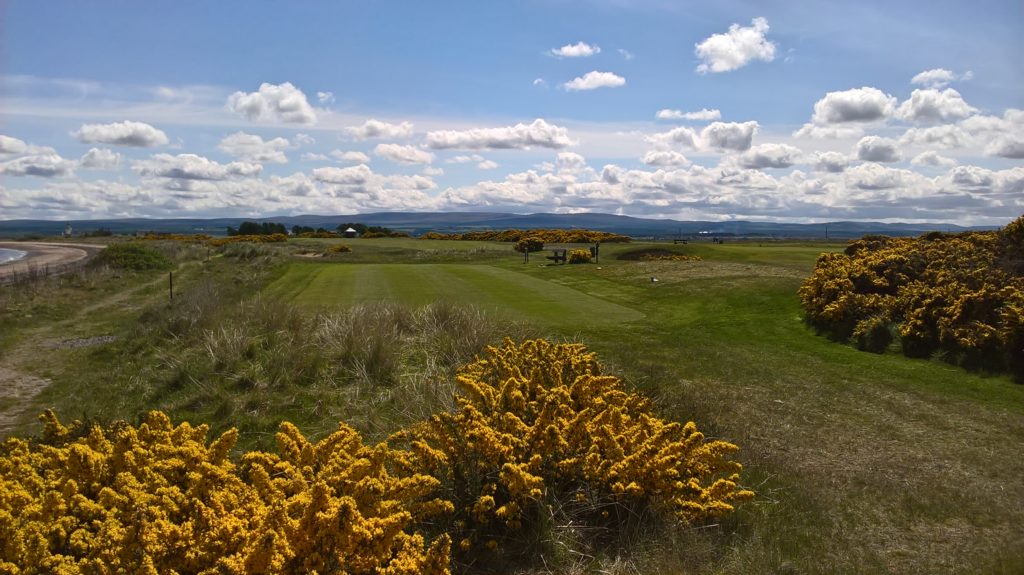

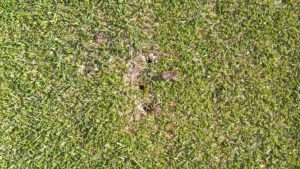
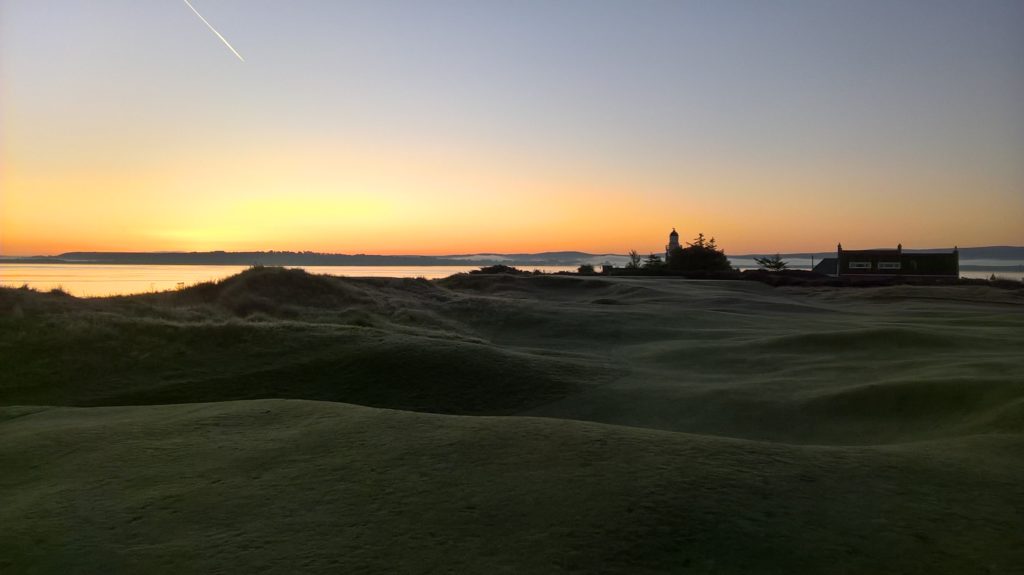
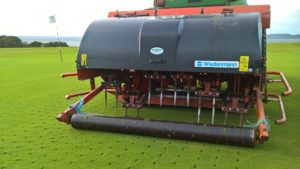
 The tees have also been verti-drained and next to do will be the approaches.
The tees have also been verti-drained and next to do will be the approaches.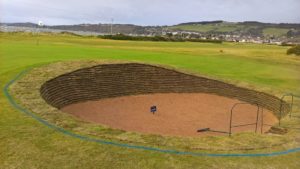 Both greenside bunkers at the 7th have been newly revetted and the front greenside at the 11th is underway. We have highlighted around 9 greenside bunkers to do this year and will be GUR until around mid March.
Both greenside bunkers at the 7th have been newly revetted and the front greenside at the 11th is underway. We have highlighted around 9 greenside bunkers to do this year and will be GUR until around mid March.
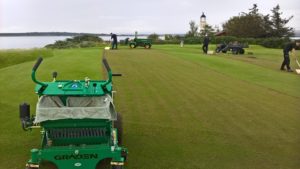
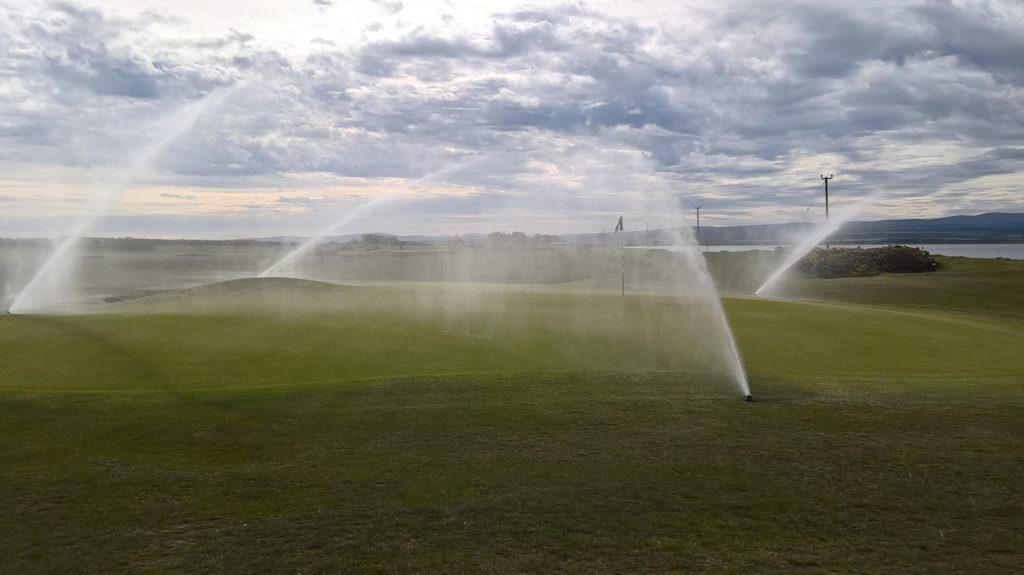

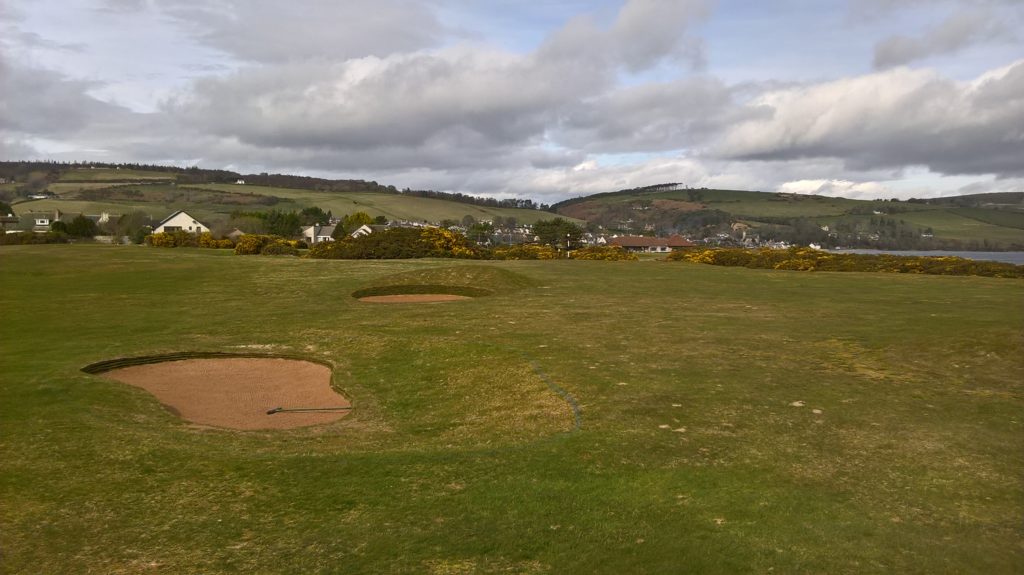
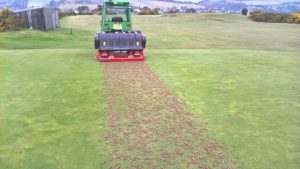
 All 90mm MDPE ring main pipe and 63mm going to the greens and tees were vibratory mole ploughed into the ground to 600mm deep. The soil underneath is very stoney to say the least and several sections of the old original 1″ steel irrigation line got unearthed. During March all the 50mm pipe and Valve in head sprinklers were installed around the greens and positioned a little further out so that the aprons can receive irrigation also. Recently the tees sprinklers have been going in and all our old greens sprinklers have been re used to save some money. These are being set in down either side of the tees to allow accurate watering of the tees themselves and also taking account of heavily walked areas by the tees. At this date there are still 5 tees and the lower putting green to complete, the new tank to erect and a new variable speed pump to go into the pumphouse. All going well once electrical and softwear work is tested, the pipe lines and sprinklers flushed and primed we are looking at around a mid April completion.
All 90mm MDPE ring main pipe and 63mm going to the greens and tees were vibratory mole ploughed into the ground to 600mm deep. The soil underneath is very stoney to say the least and several sections of the old original 1″ steel irrigation line got unearthed. During March all the 50mm pipe and Valve in head sprinklers were installed around the greens and positioned a little further out so that the aprons can receive irrigation also. Recently the tees sprinklers have been going in and all our old greens sprinklers have been re used to save some money. These are being set in down either side of the tees to allow accurate watering of the tees themselves and also taking account of heavily walked areas by the tees. At this date there are still 5 tees and the lower putting green to complete, the new tank to erect and a new variable speed pump to go into the pumphouse. All going well once electrical and softwear work is tested, the pipe lines and sprinklers flushed and primed we are looking at around a mid April completion.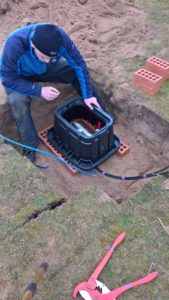
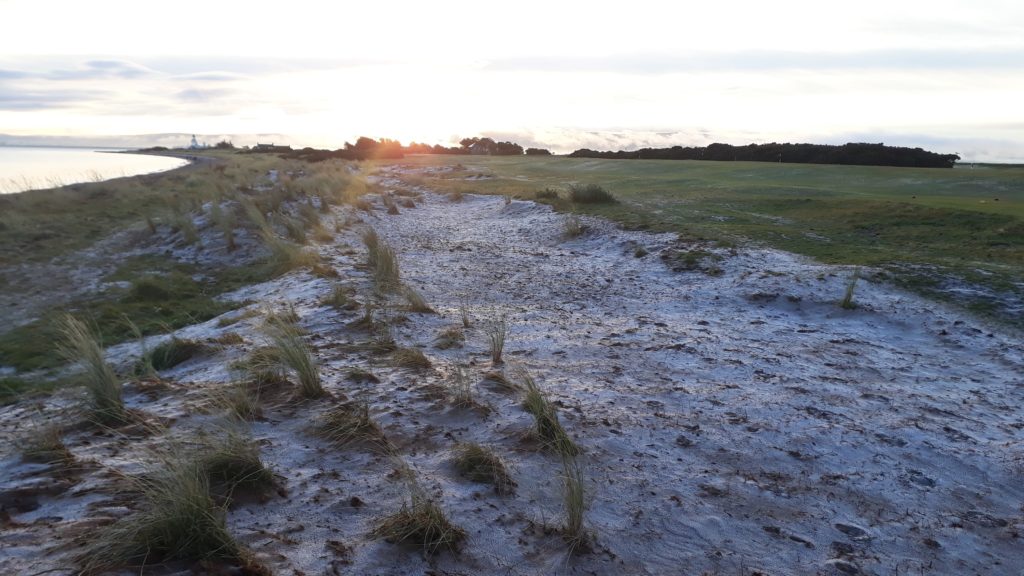
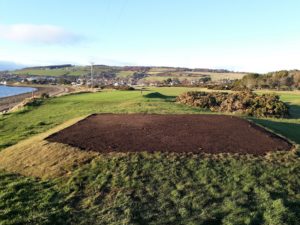
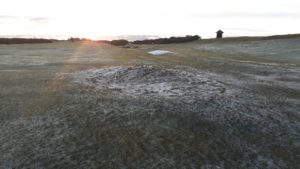



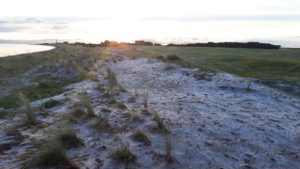
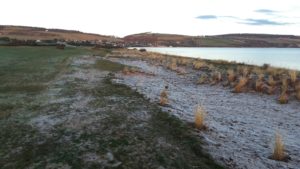


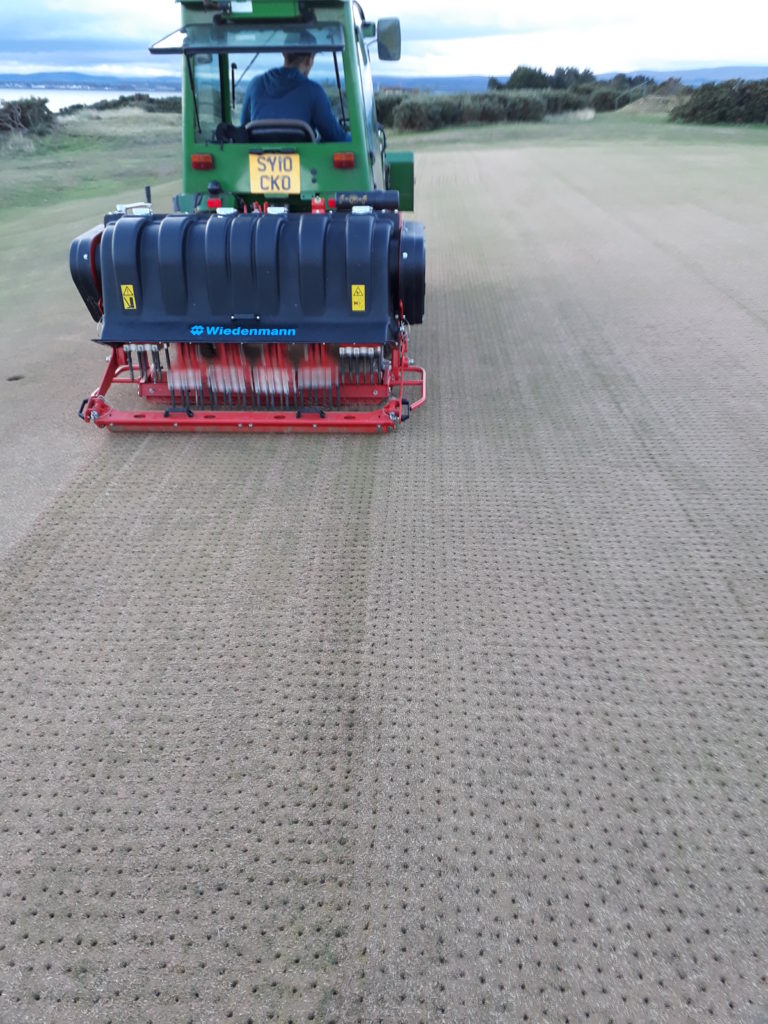
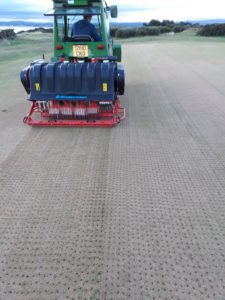 Pot seeding of all greens took place on September 10th – 12th. 160kg (17 grammes/m2) of Bar Fescue seed was broadcast over the open tine holes created by our versatile SL6 Wiedenmann machine with solid 16mm tines set into the turf about 30 – 40mm deep. A heavy sanding of around 15 tonnes in total went on first and when it had dried enough it was all drag matted back into the tine holes. Further brushing and rolling took place to help fill up the holes and restore the greens for play.
Pot seeding of all greens took place on September 10th – 12th. 160kg (17 grammes/m2) of Bar Fescue seed was broadcast over the open tine holes created by our versatile SL6 Wiedenmann machine with solid 16mm tines set into the turf about 30 – 40mm deep. A heavy sanding of around 15 tonnes in total went on first and when it had dried enough it was all drag matted back into the tine holes. Further brushing and rolling took place to help fill up the holes and restore the greens for play.